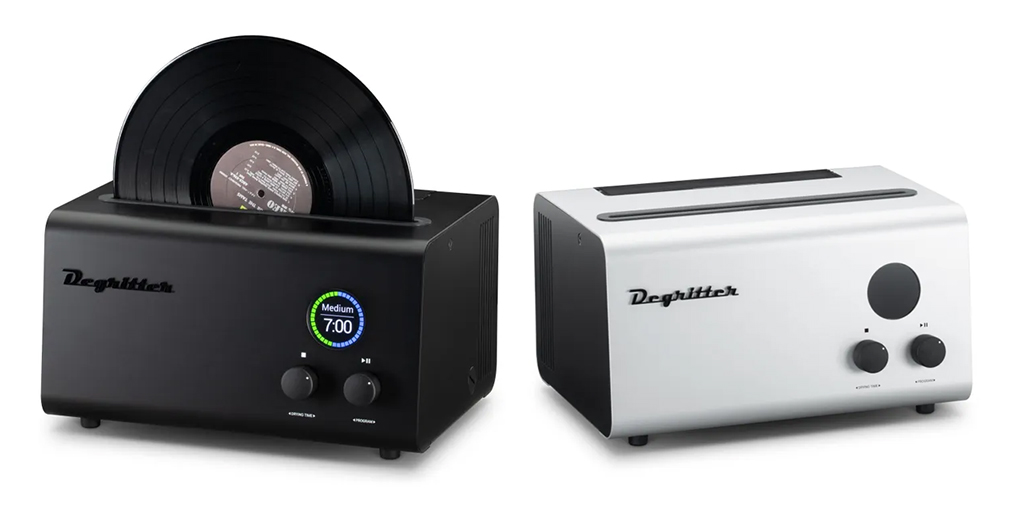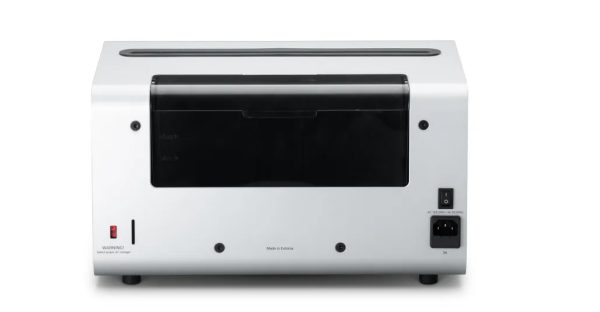The Degritter Record Cleaner Stylish, Quiet, Effective
By Jeff Dorgay
This is more of a long-term review, but in a good way.
After living with the Degritter for some time now and having cleaned a ton of records with it, the out of the box love has grown. At about $3,000, this is the best one going for our money. The reason we say “about $3,000” is because the original price was $3,200, the price of the new soon to be released Mark II version is also $3,200, but there are still a few first gen machines for sale on retailer shelves at a slightly discounted price.
You know I’m not one to throw that B-word around loosely. However, I’ve owned a lot of RCMs over the years. Please notice the use of the word “own.” This journey began in the late 70s with an original Nitty Gritty and started a regimen of vinyl hygiene that’s stayed in place. We went through a few Nitty Gritty’s, a Keith Monks (both on loan and a buy) nearly all of the VPI machines, a ClearAudio RCM, a Loricraft, the Kirmuss, and the Systeme Deck.
The base VPI 16.5 that’s been around since current CEO Mat Weisfeld was only a figment of his father Harry’s imagination is still not a bad way to go for the budget minded record collector. But ultrasonic cleaning is the way to go to get your records super clean. Ten years ago, I might have commented that “you could buy a lot of vinyl for $3,200” but today not as much. Considering what records cost these days – especially if you have a lot of rare items, or an extensive collection of remastered discs, keeping them pristine is the best money you can spend.
If you’ve ever read an article on vinyl in the mainstream press, they love to wax poetic about the classic sound of vinyl, with all the ticks and pops. Forget that – it’s not part of the true vinyl experience and it doesn’t have to be. Especially if you have a Degritter
Hands down the most user-friendly model going
You can take a quick peek at the step by step operation, here at the Degritter website. (https://degritter.com/products/mark-1/). You can also download the well-written manual, which will give you an even better idea of how the Degritter works.
It does its job with distilled water, the ultrasonic process takes care of the rest. If you have really dirty records, they do supply their own cleaning fluid that you can add to the wash tank, which should be changed every 30 records anyway. It’s not the worst idea to save the really dirty ones for a single batch.
Once the water tank is filled, all that needs to be done is load your favorite record, choose the cleaning mode, and push the go button. There are three modes, QUICK – 2 min/15 sec., Medium – 3 min/45 sec and HEAVY, 6 min-45 seconds. As most of my records are either very clean, going beyond medium was never necessary. In the past when using another ultrasonic cleaner, and buying more bargain records prone to filthy surfaces, the VPI 16.5 was used for an initial cleaning, then a pass through the ultrasonic.
A search for some really scummy records at our local used record store put the Degritter’s maximum cleaning ability to the test, and it passed with ease. This leads to the next great thing about the Degritter – it’s the quietest RCM going. While my Degritter is in a separate room where the main turntables in my system reside, behind a closed door, this still is a RCM you could listen to music with while cleaning records and not be annoyed.
It’s ability to perform the cleaning and drying cycle unattended makes cleaning records as painless and unobtrusive as can be. Nothing more boring than sitting above the VPI, scrubbing, and squirting and making a moderate mess. Again, convenience and refinement has a higher price tag. The seasoned record collector will love the ease of operation, and a clean, dry record to drop in a fresh archival sleeve when you’re done. Fantastic.
Odds and ends

The Degritter also allows you to set how high the water/cleaning fluid rises on the record, so that it doesn’t soak the label. They also offer adaptors for 7 and 10-inch records that will let you maintain these records. As I only have a handful of 78s, I did not try to clean them, but will ask the Degritter people if this is possible. Stay tuned.
Finally, this machine really caters to the vinyl enthusiast that is going to clean a LOT of records. Filters and accessories are very inexpensive, and the spare wash tank is a great touch. If you’re going from a big batch of dirty records to not so dirty, or brand new records, you can just pop a new tank in and keep cleaning while you rinse out the first tank.
The lack of sound
Every fluid and vacuum RCM we’ve tried always leaves a tiny bit of residue, even after a second distilled water wash only. It’s not the end of the world as we know it, but if you have a highly resolving system, you might hear a slight bit of swishing noise, almost like a faint hiss from a tape deck with a lot of wow and flutter. The ultrasonic method has none of this.
Even with a brand new record, (which we always suggest you clean anyway) the level of surface noise eliminated by the Degritter is almost like putting a better grade of tubes in your phono preamplifier. That kind of thing.
If you add a Degritter to your vinyl setup, you will never have to reminisce about those “clicks and pops” again. And that’s a wonderful thing. PS: The Degritter was one of our two Product of the Year winners in the accessories category. Highly recommended.
www.degritter.com



